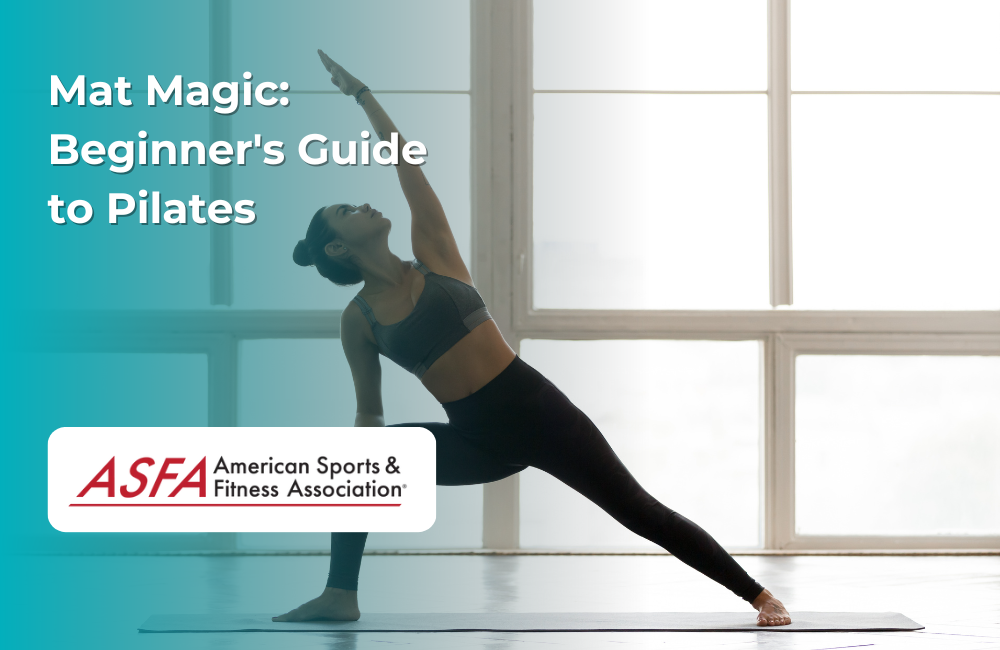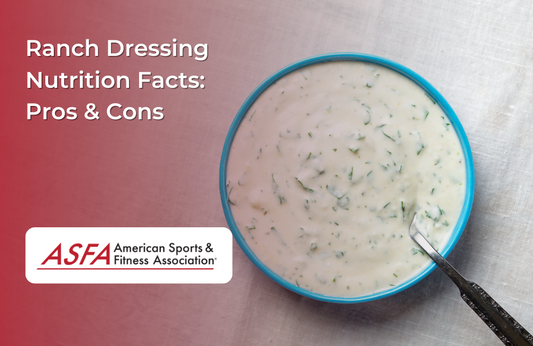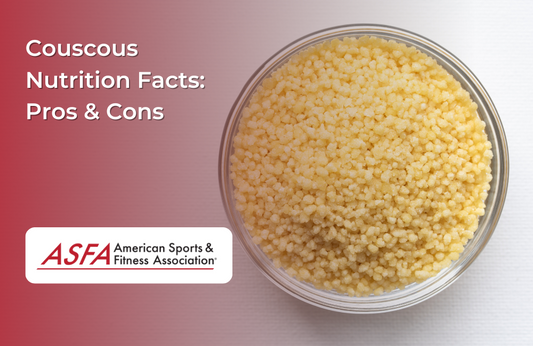Pilates, often referred to as “mat magic” for its ability to transform the body and mind, is a powerful fitness practice that offers countless benefits for individuals at all fitness levels, especially beginners. Pilates classes are available in various formats, including group classes, which are suitable for beginners and can be found in studios and gyms. For those pursuing ASFA certification, understanding the core principles of Pilates can significantly expand your expertise and provide you with a holistic approach to fitness training. Pilates is more than just exercise—it’s a mindful discipline that emphasizes controlled movements, core strength, flexibility, and the mind-body connection.
In this detailed guide, we will explore the fundamentals of Pilates, its core principles, and how beginners can benefit from this transformative practice. As a fitness professional or someone on the journey to becoming certified, mastering Pilates can give you a competitive edge by providing your clients with a low-impact, highly effective training option that enhances both physical and mental well-being.
The Origin and Essence of Joseph Pilates
Pilates is a form of exercise developed by Joseph Pilates in the early 20th century. Originally named “Contrology”, Pilates was designed to strengthen the body’s core muscles, improve flexibility, promote better posture, and foster an acute awareness of how the body moves. Unlike many fitness modalities that focus on repetitive movements or weightlifting, Pilates emphasizes precision, control, and alignment. This system integrates the entire body, creating a balance between strength, flexibility, and mind-body awareness. Pilates works as a comprehensive exercise method that improves core strength, flexibility, and overall body alignment.
There are two main types of Pilates: mat-based Pilates and equipment-based Pilates (using machines like the Reformer and Cadillac). In this guide, we’ll focus on mat Pilates, which is highly accessible to beginners and can be done with minimal equipment, making it an excellent starting point for fitness professionals and clients alike.
What is Mat Pilates?
Mat Pilates is a low-impact exercise modality that focuses on core strength, flexibility, and body alignment. Developed by Joseph Pilates in the early 20th century, this form of exercise is grounded in six core principles: Breath, Concentration, Centering, Control, Precision, and Flow. These principles guide every movement, ensuring that each exercise is performed with mindfulness and intention.
Mat Pilates consists of a set guide of 50 moves designed by Joseph Pilates himself. These exercises can be performed on a mat with minimal equipment, making it an accessible option for individuals of all ages and fitness levels. Whether you’re a beginner or an experienced practitioner, Mat Pilates can be tailored to suit your individual needs and abilities, providing a versatile and effective workout.
The beauty of Mat Pilates lies in its simplicity and adaptability. You don’t need fancy machines or a gym membership to reap the benefits. All you need is a comfortable mat and a commitment to consistent practice. By focusing on core strength, flexibility, and proper alignment, Mat Pilates helps you build a strong foundation for overall fitness and well-being.
The Core Principles of Pilates
To fully appreciate and teach Pilates, it's essential to understand the core principles that guide the practice. These principles form the foundation of every movement and ensure that practitioners perform each exercise with maximum benefit while reducing the risk of injury.
-
Centering: In Pilates, all movements originate from the "powerhouse" or core—comprised of the abdominal muscles, lower back, hips, and glutes. Engaging the core during each movement ensures stability and balance, helping to protect the spine and improve posture.
-
Concentration: Pilates requires a high degree of focus. Every movement should be performed with mindful attention, ensuring precision and effectiveness. Concentration helps bridge the connection between the body and mind, making each movement purposeful.
-
Control: As Pilates founder Joseph Pilates emphasized, “It's not about doing the movement quickly, but with control.” Every action is deliberate, and muscles are engaged throughout the entire range of motion to enhance strength and prevent injury. Mastering control in Pilates translates to improved coordination and muscle engagement in other physical activities.
-
Precision: Precision in Pilates is key. Each exercise has a specific alignment, sequence, and form that should be followed meticulously. This helps ensure that the correct muscle groups are being activated and that the exercise is done efficiently. Proper alignment during each movement not only optimizes performance but also prevents compensation from weaker muscles.
-
Breath: Breathing is central to Pilates practice. Proper breathing enhances oxygen flow, improves concentration, and supports movement control. Inhaling deeply through the nose and exhaling fully through the mouth helps maintain rhythm during exercises, engages the diaphragm, and stimulates core activation.
-
Flow: Pilates exercises are performed in a flowing, seamless manner, with transitions that are as important as the exercises themselves. This fluidity creates a sense of grace and coordination, making the practice feel like a moving meditation.
-
Postural Alignment: Good posture is a fundamental part of Pilates. Emphasis is placed on maintaining a neutral spine and correct alignment throughout each exercise. This focus on alignment improves posture in daily life, reducing the strain on the body and preventing chronic pain and injuries.
Benefits of Pilates for Beginners
For beginners, Pilates offers a multitude of benefits that extend far beyond physical fitness. Whether you’re new to exercise or looking for a low-impact, highly effective workout, Pilates can help you build a foundation of strength, flexibility, and body awareness. Regular pilates sessions, starting with twice a week, are recommended for optimal results and consistency. Here’s why Pilates is especially beneficial for beginners:
-
Core Strength: Pilates is famous for its focus on the core, which is central to virtually every movement. Strong core muscles support proper posture, reduce the risk of back pain, and improve overall stability. For beginners, this emphasis on the core provides a solid foundation for all other forms of exercise.
-
Improved Flexibility: Pilates lengthens and strengthens muscles simultaneously, which improves flexibility and range of motion. This can make everyday activities easier and reduce stiffness in the body, which is particularly important for those who are new to fitness or have sedentary lifestyles.
-
Posture Improvement: One of the main objectives of Pilates is to improve alignment and posture. By strengthening the muscles that support proper posture (such as the core, back, and shoulders), Pilates helps correct imbalances caused by poor habits like slouching or sitting for long periods.
-
Mind-Body Connection: Pilates promotes mindfulness and body awareness by encouraging practitioners to focus on their breath, alignment, and movement. This mindful approach fosters a deeper connection between the body and mind, helping reduce stress and improve mental clarity.
-
Low Impact, High Results: Pilates is a low-impact form of exercise, making it ideal for beginners, older adults, or those recovering from injury. The controlled movements minimize the risk of injury while still delivering effective results in terms of strength, flexibility, and muscle tone.
-
Injury Prevention: Pilates strengthens the body evenly, correcting muscular imbalances that often lead to injury. For beginners, this balanced approach to movement reduces the likelihood of strains and injuries commonly associated with other forms of exercise.
-
Stress Reduction: The focus on breathing and controlled movement in Pilates has a calming, meditative effect. This not only reduces stress and tension but also enhances concentration and overall well-being.
Getting Started with Pilates: A Step-by-Step Guide
If you’re integrating Pilates into your ASFA certification or preparing to recommend it to clients, here’s how to get started and make the most of this practice:
-
Seek Out Qualified Instruction: For beginners, it’s important to start with a certified Pilates instructor who can ensure proper form, alignment, and technique. This is crucial for avoiding injury and maximizing the benefits of the practice. Look for instructors who are experienced in working with beginners and can adapt exercises to different fitness levels. Starting with a mat class is generally more affordable and accessible for beginners, allowing you to learn the basics in a group setting or even online.
-
Invest in Quality Equipment: For mat-based Pilates, you’ll need a high-quality, comfortable exercise mat. Other useful props include resistance bands, a Pilates ring, or a small stability ball, but these are optional and can be added as you progress.
-
Master the Fundamentals: Start with basic Pilates movements that focus on building a strong foundation. Core exercises like the Hundred, Pelvic Curl, Roll-Up, Single Leg Circle, and Spine Stretch are fundamental movements that beginners should focus on. These exercises emphasize core engagement, alignment, and breath control.
-
Progress Gradually: As you become more proficient in Pilates, gradually increase the complexity and intensity of your exercises. It’s important to build strength and flexibility progressively, without rushing into advanced movements. Regular practice will allow you to refine your technique and deepen your understanding of Pilates.
-
Consistency is Key: Pilates is most effective when practiced consistently. Aim for at least 2-3 sessions per week to see improvements in core strength, flexibility, and posture. Over time, you’ll notice your body becoming more aligned, balanced, and resilient.
Common Mistakes to Avoid
When practicing Mat Pilates, it’s essential to avoid common mistakes that can lead to injury or ineffective practice. Here are some pitfalls to watch out for and tips on how to steer clear of them:
-
Not Engaging the Core Muscles: One of the fundamental principles of Pilates is core engagement. Failing to engage your core can result in poor posture and an ineffective workout. Always focus on drawing your navel towards your spine and maintaining a strong, stable center throughout each exercise.
-
Not Maintaining a Neutral Spine: Keeping a neutral spine is crucial for preventing strain on your back and neck. Avoid overarching or flattening your back. Instead, aim to maintain the natural curves of your spine, which will help distribute weight evenly and reduce the risk of injury.
-
Not Using Proper Breathing Techniques: Breath is a key component of Pilates practice. Inhaling deeply through the nose and exhaling fully through the mouth helps oxygenate your muscles and maintain rhythm. Neglecting proper breathing can lead to dizziness and reduce the effectiveness of your workout. Focus on synchronizing your breath with your movements for optimal results.
-
Not Listening to the Body: It’s important to listen to your body and respect its limits. Pushing too hard or ignoring discomfort can lead to injury and burnout. Pay attention to how your body feels during each exercise and make adjustments as needed. Remember, Pilates is about quality, not quantity.
By being mindful of these common mistakes and taking steps to avoid them, you can ensure a safe and effective Mat Pilates practice that supports your fitness goals.
Key Pilates Exercises for Beginners
Here are some essential Pilates exercises for beginners that focus on core strength, flexibility, and body awareness:
-
The Hundred: A classic Pilates warm-up exercise that strengthens the core and increases circulation.
-
Roll-Up: This movement stretches the spine and hamstrings while engaging the abdominals.
-
Single Leg Circles: Strengthens the hips and core while improving stability.
-
Pelvic Curl: Builds strength in the glutes and lower back while stretching the spine.
-
Spine Stretch Forward: Focuses on spinal flexibility and hamstring mobility.
-
Double Leg Stretch: Engages multiple muscle groups including the core, arms, and legs. It is essential for maintaining proper body alignment and core engagement.
Each of these exercises should be performed with attention to breath, alignment, and controlled movement to ensure maximum benefit.
Mind-Body Connection in Pilates
Pilates is more than just a physical workout; it’s a mind-body practice that aims to organize the body and optimize its movements. The mind-body connection is essential in Pilates, as it allows individuals to develop greater body awareness and control. By focusing on this connection, you can unlock a host of benefits that enhance both your physical and mental well-being.
-
Improve Posture and Alignment: By paying attention to your body’s alignment and making mindful adjustments, you can improve your posture both during Pilates exercises and in your daily life. This focus on alignment helps prevent chronic pain and promotes better overall health.
-
Increase Core Strength and Flexibility: The mind-body connection in Pilates encourages you to engage your core muscles and perform each movement with precision. This not only strengthens your core but also enhances your flexibility and range of motion.
-
Enhance Body Awareness and Control: Pilates requires a high degree of concentration and control. By tuning into your body’s sensations and movements, you can develop a deeper awareness of how your body works. This heightened awareness translates to better coordination and balance in all areas of life.
-
Reduce Stress and Anxiety: The mindful nature of Pilates, combined with its emphasis on breath control, has a calming effect on the mind. Practicing Pilates can help reduce stress and anxiety, leaving you feeling more centered and focused.
-
Improve Overall Physical and Mental Well-Being: By integrating the mind-body connection into your Pilates practice, you can achieve a harmonious balance between physical fitness and mental clarity. This holistic approach supports overall well-being and enhances your quality of life.
Incorporating mindfulness into your Pilates practice not only maximizes the physical benefits but also fosters a deeper connection between your body and mind. Embrace this connection, and you’ll discover a more profound and rewarding Pilates experience.
Conclusion: Unlock the Transformative Power of Pilates
For those just beginning their Pilates journey, the practice offers an accessible yet highly effective way to improve strength, flexibility, posture, and overall well-being. By understanding and applying the core principles of Pilates, beginners can develop a strong foundation that supports long-term fitness and holistic health.
For fitness professionals pursuing ASFA certification, integrating Pilates into your expertise opens the door to providing clients with a versatile, low-impact, and highly beneficial fitness option. Whether you're helping clients improve their core strength, rehabilitate from an injury, or simply enhance their posture, Pilates offers a pathway to transformative results.
By focusing on proper technique, cultivating mindfulness, and committing to regular practice, both you and your clients can unlock the full potential of Pilates. Embrace the magic of the mat, and discover how Pilates can enhance not only your physical fitness but also your mental and emotional well-being.
Begin Your Pilates Journey Today
Whether you're integrating Pilates into your ASFA certification or embarking on a personal fitness journey, Pilates offers a transformative experience that balances strength, flexibility, and mindfulness. Start practicing today and witness the positive changes in your body, mind, and overall health.





